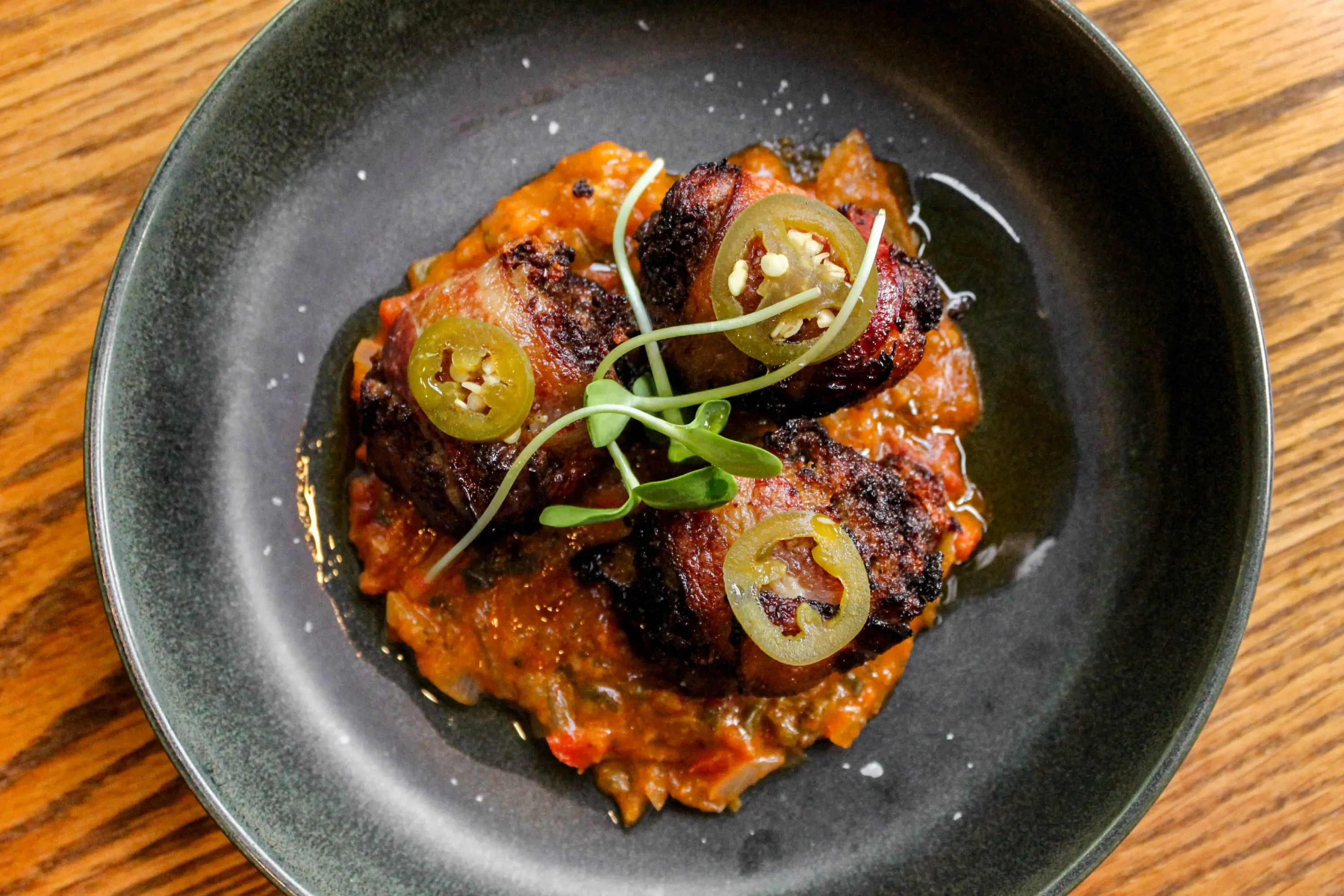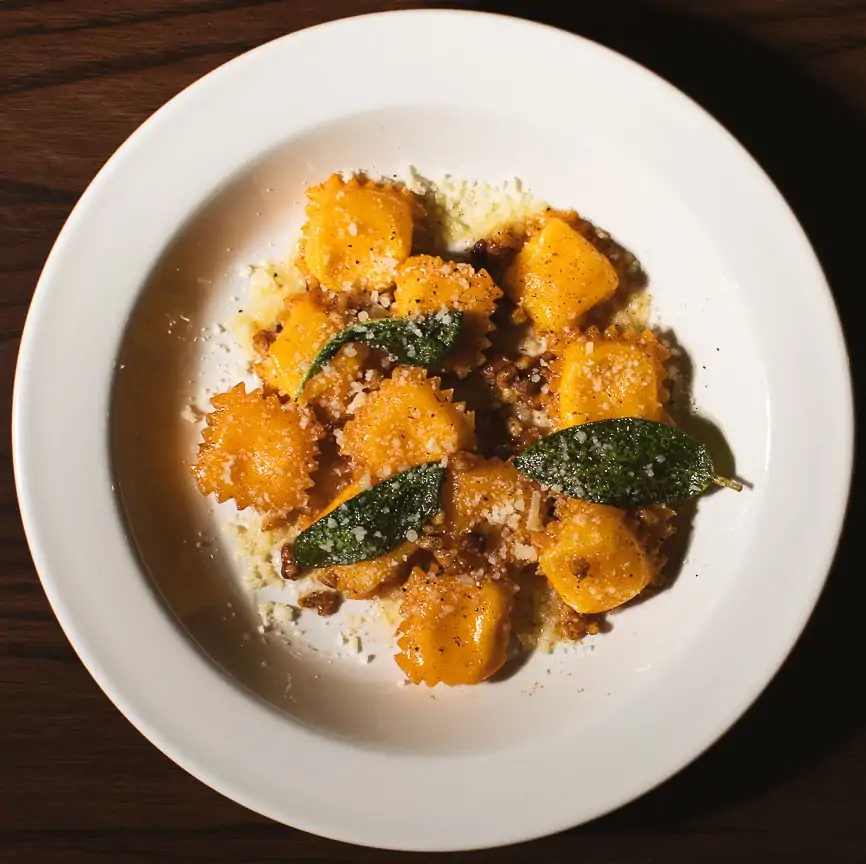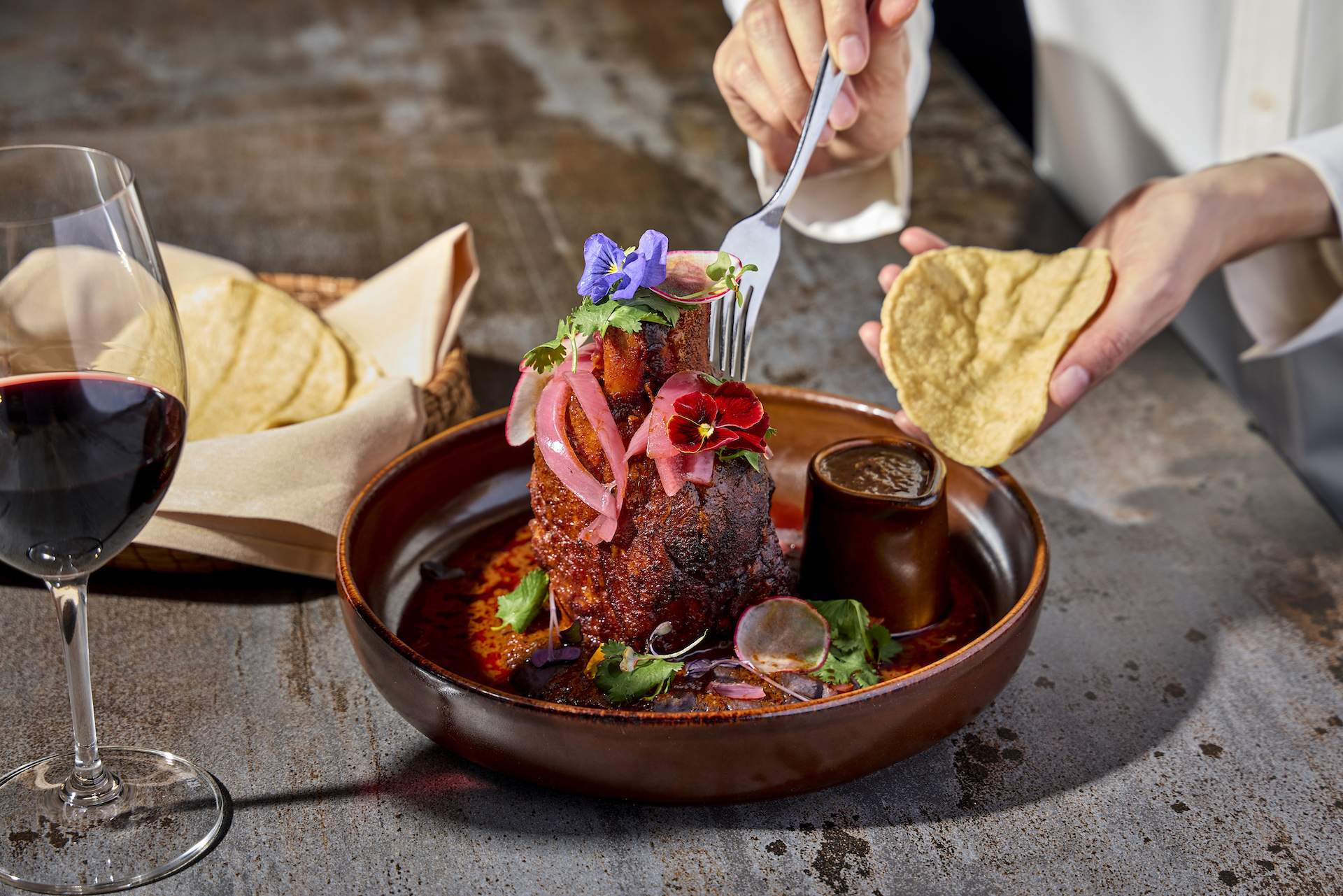Asian American Pacific Islander heritage month offers a way to celebrate the resiliency, tradition, cultures, and countless contributions of Asian Americans, Native Hawaiians, and Pacific Islanders across the United States.
Food and restaurants have long served as beacons of representation for the API community in the US. Orange Garden and Won Kow are some of the oldest API restaurants in Chicago. Orange Garden opened in 1927—John Dillinger was a regular. Won Kow opened a year later (and didn’t close until 2018). Rumor has it that Al Capone had his own table in a corner of the second-floor restaurant.
They both paved the way for the exciting, diverse API culinary scene in Chicago today. A Korean American chef leans into her cultural roots while nodding to springtime, a River North restaurant spotlights the vast culinary influences of Southeast Asia, and an Indian American chef’s efforts to highlight Indian food have earned his restaurant a MICHELIN star.
Read on to learn more about five dishes that showcase Asian pride at restaurants across the city.
Lobster soondubu at Parachute (Avondale)
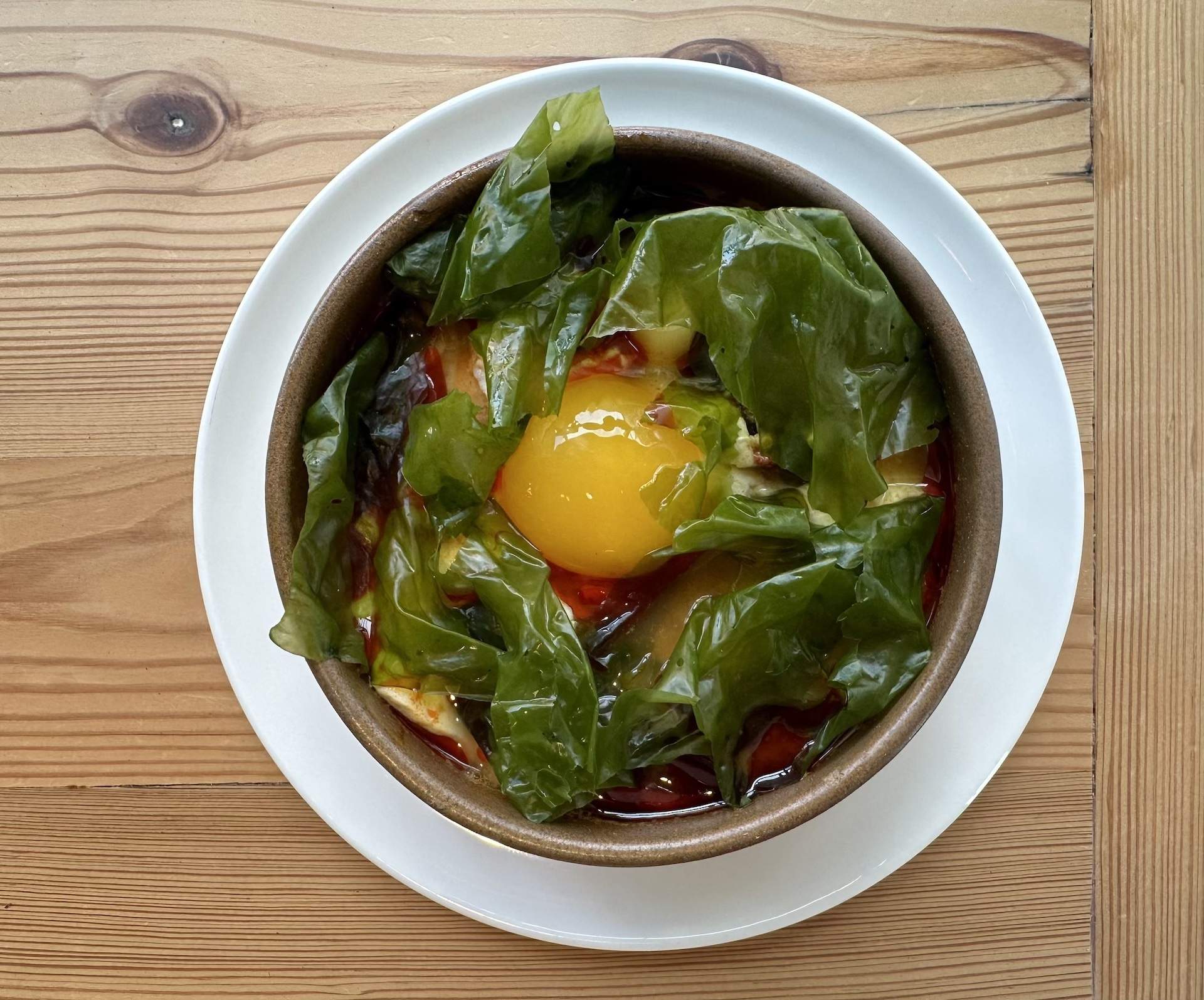
When Parachute opened almost 10 years ago, the Avondale restaurant offered dishes that leaned into the Korean roots of chef and partner Beverly Kim but didn’t fully commit to it.
After an extended Covid-related closure, James Beard Award winners Kim and her husband Johnny Clark (also a chef and partner at Parachute) reevaluated their restaurant and decided it was time for a change.
“Now we are going deeper into Korean culture,” Kim says. “It’s an opportunity to explore the nuances of what Korean food really is and offers a way to educate customers about our rich heritage.”
One of Parachute’s new dishes is lobster soondubu, also known as sundubu jjigae. Kim’s version of the spicy soft tofu stew that’s popular throughout Korea has stock made with lobster shells and aromatics, including gochujang, garlic, and kombu.
Once reduced, Kim adds freshly pressed soft tofu, sea lettuce, and lobster meat. The addition of asparagus, green garlic, and morels allows the chef to represent spring in Chicago, while the lobster adds an unexpected twist. A gently brined duck egg adds richness.
“The flavor tastes traditional in that it’s very comforting in that Korean way but there’s something new and exciting about it too,” Kim says. “It tastes like home to me.”
Through the month of May, Parachute will feature a take on a whiskey sour highlighting @west32soju and @apologueliqueurs. Some of the proceeds of this cocktail will go towards @advancingjusticechicago and $1 of every haemul pajeon (seafood pancake) will go towards helping this cause in partnership with #doughsomething, a country-wide campaign to support Asian Americans Advancing Justice.
Tsukune Dango at Momotaro (West Loop)
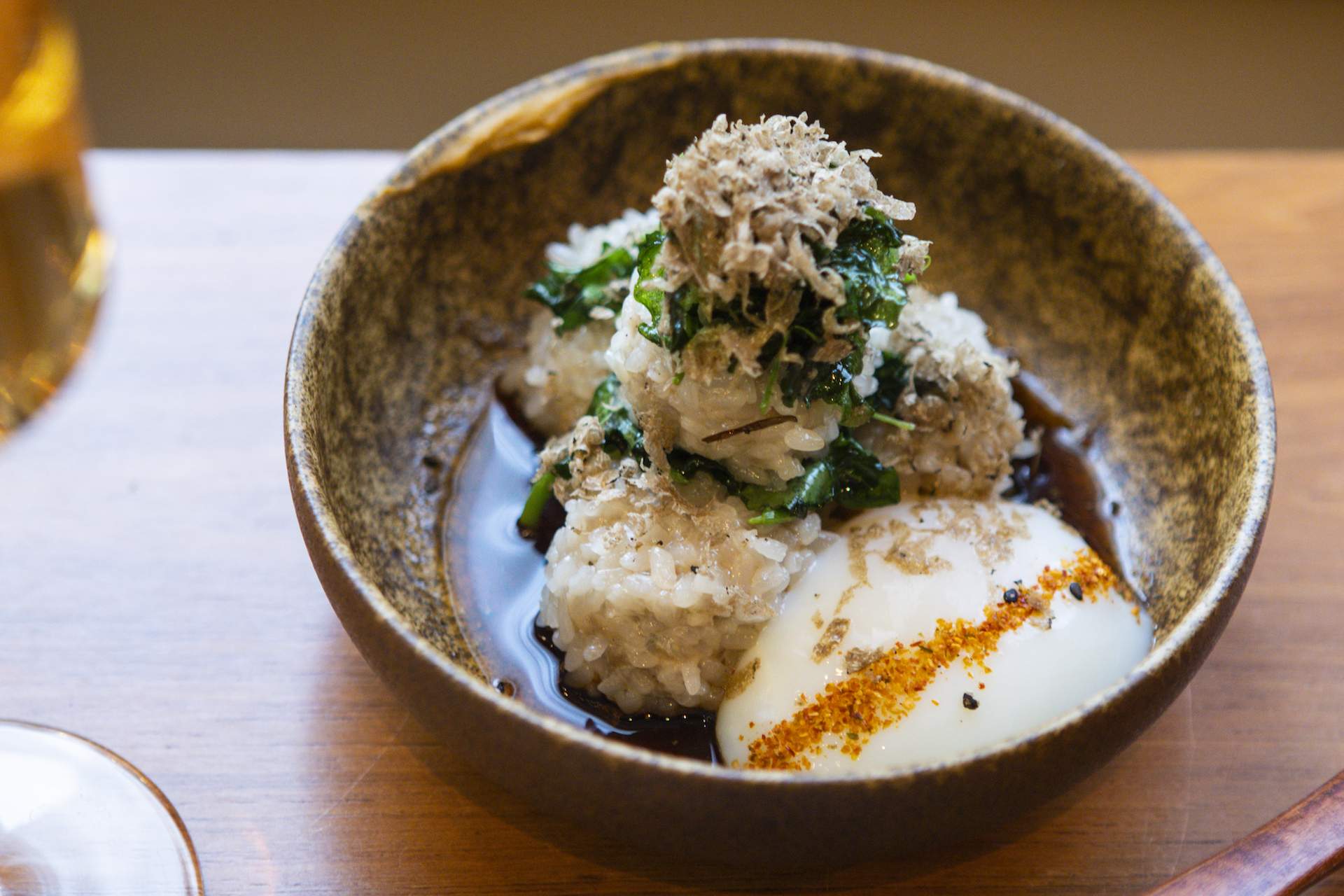
Growing up in a Japanese household in Charlotte, North Carolina, Momotaro chef and partner Gene Kato learned to cook dishes central to his culture alongside his mother. Kato embraces those recipes and techniques as a professional chef at one of the city’s most popular restaurants while adding his own touch.
Take his version of the Japanese meatball dish, tsukune dango. Kato swaps ground pork for chicken, which is seasoned lightly with soy sauce and sesame oil.
The orbs are coated in mochigome (a glutinous Japanese rice) before they’re steamed. To intensify the chicken flavor, Kato makes a syrup-like sauce from chicken bones and broth infused with soy sauce and Japanese aromatics. Wilted chrysanthemum leaves break up the rich flavors, while karashi (Japanese hot mustard) adds some heat. A poached egg and a dusting of shaved seasonal truffles sit on top.
“The base of that dish is really simple. I just try—but don’t tell my mom—to elevate it to Momotaro level,” Kato says of the dish that is one of the best-selling items at his restaurant. “As long as customers get the essence of the Japanese culture in a dish, I feel we’ve done a good job.”
Yogurt chaat with crispy potato, yogurt mousse, and raspberry chaat masala at Indienne (West Loop)
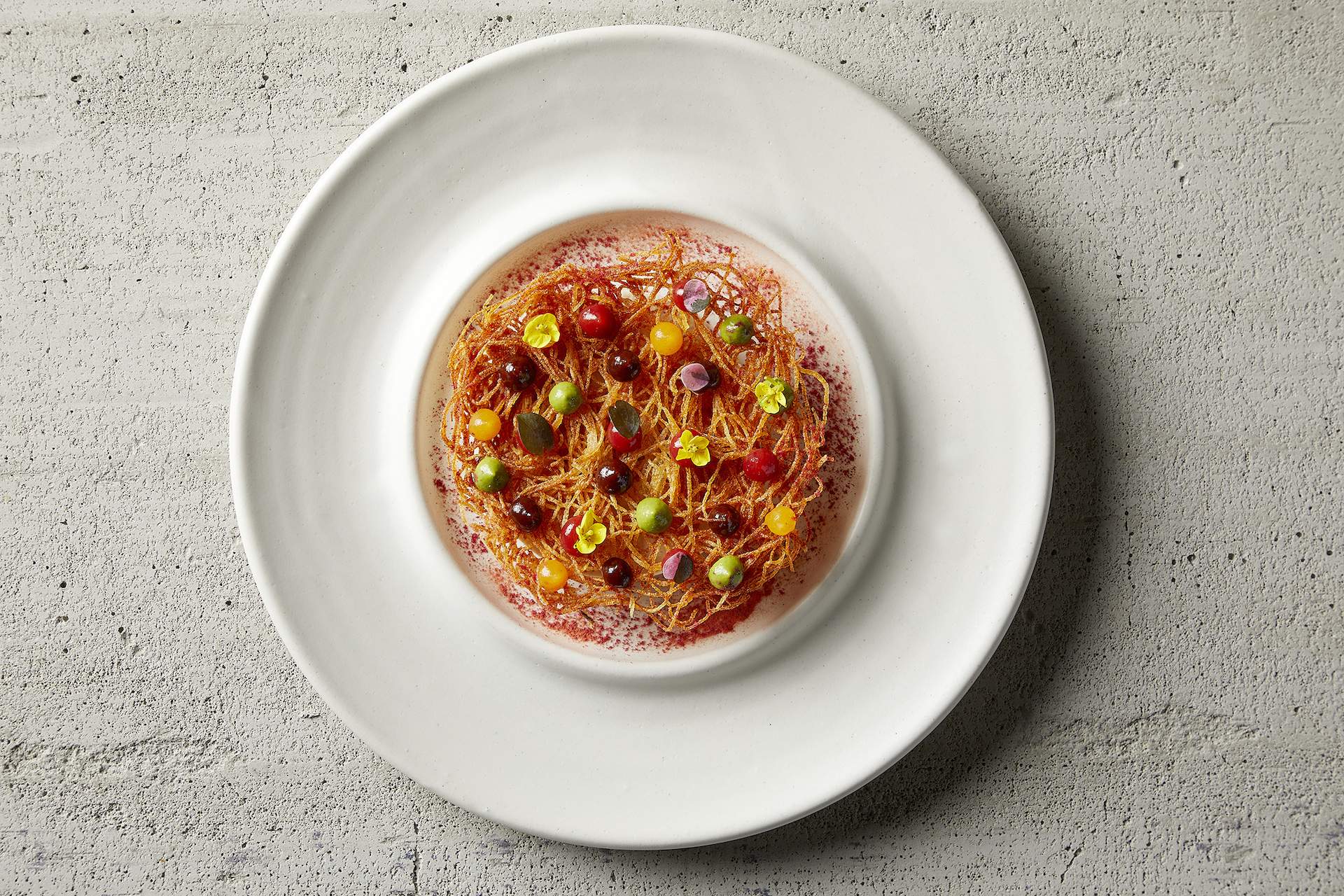
Executive chef and partner Sujan Sarkar’s pride in his Indian heritage can be found all over his West Loop restaurant, including on the walls, which feature artwork inspired by the colorful Indian festival Holi.
Some of the cocktails are named after Indian cities where Sujan’s career took shape such as the Delhi cocktail with mezcal, goat cheese, and apricot.
Then there are dishes Sujan creates at the modern fine-dining Indian restaurant, which was recently added to the MICHELIN guide and made Esquire Magazine’s Best New Restaurants in America list in 2022. (Sarkar is also chef/partner of ROOH, with locations in San Francisco, Columbus, and Palo Alto, as well as Baar Baar, an Indian gastropub in NYC and LA)
One dish Sarkar is particularly proud of is yogurt chaat, a street food staple in South Asia. “Every city in India has a different version of chaat. I grew up eating it my whole life and whenever I go back to India, I always get it,” Sarkar says. “This version of chaat is inspired by old Delhi.”
His version tops a rose essence-flavored yogurt mousse with fried and powdered green mango and various chutneys (tamarind, strawberry-chile, and mint-cilantro). It’s crowned with a crispy potato nest, raspberry chaat masala (a popular Indian spice mix with the addition of raspberries), and edible flowers.
“It’s an elevated and refined take on chaat that mimics the flavors and textures of the original,” Sarkar says.
Beef pho with beef meatballs at Saigon Sisters (Multiple locations)
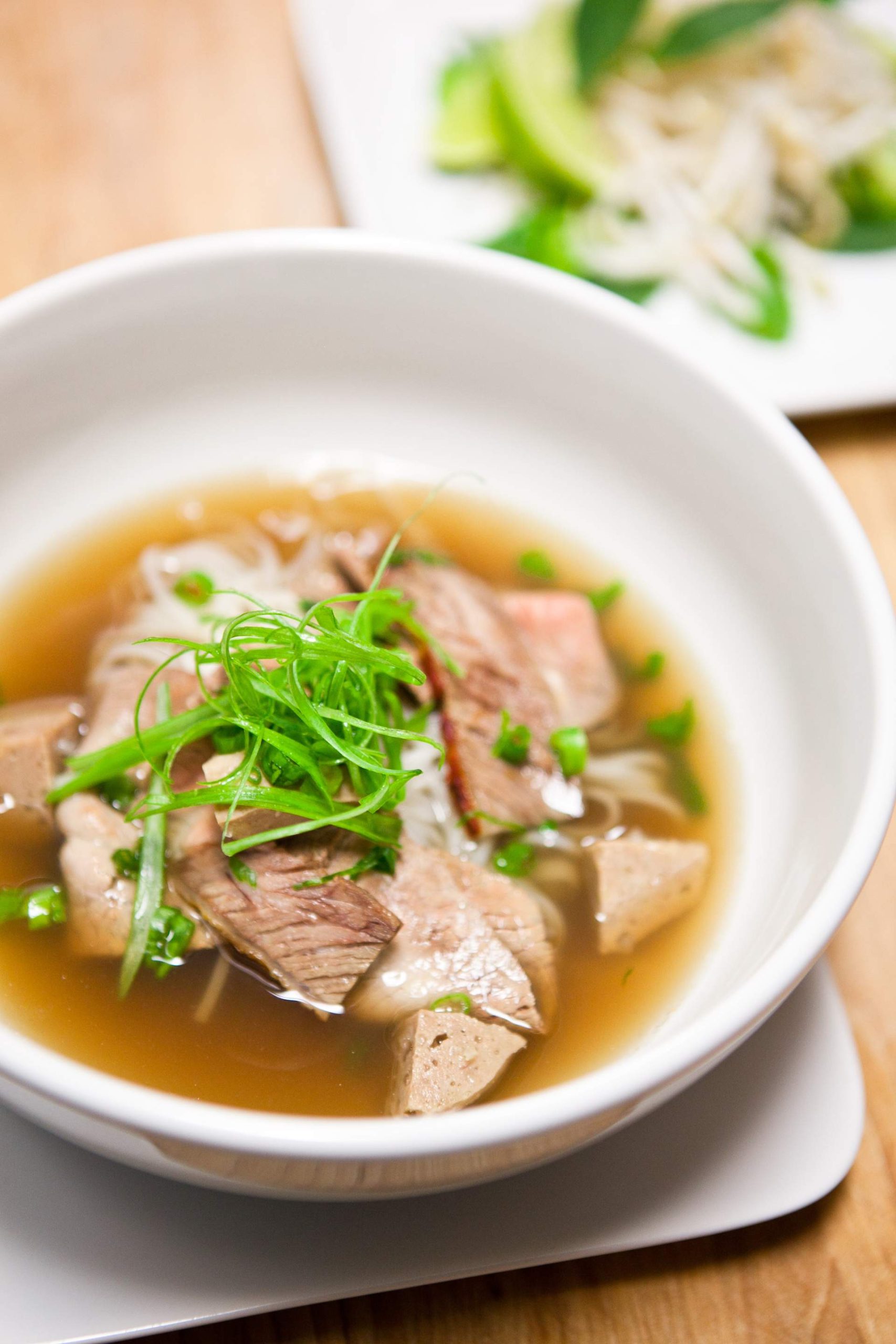
Growing up in Vietnam, Mary Nguyen Aregoni had a front-row seat to the entrepreneurial spirit of her mother and grandmother, who ran a successful food distribution business. But the war forced her family to leave their homeland. They settled first in a refugee camp in Thailand for two years before immigrating to the US.
At Saigon Sisters, the chainlet of Vietnamese restaurants she runs along with her sister Theresa Nguyen and mother Mama Suu, the menu is full of dishes that speak to their heritage and culture.
Green papaya salad comes with housemade beef jerky, while the banh mi selection includes a classic preparation (ham, pork, and chicken pate) as well as less traditional ones (barbecued jackfruit).
“Everything I do in my business is somehow related to my past, my family, and a part of who I am,” Nguyen Aregoni says.
But perhaps it’s the beef pho with beef meatballs that’s closest to her heart. “This dish brings me back to my childhood,” she says of the traditional Vietnamese rice noodle soup made here with a broth that’s simmered for 12 hours. “Every time I eat it, I think of my father, who passed away 20 years ago, because he would take me on the back of his moped and drive to our favorite pho restaurant every day.”
Kamayan Feast at Sunda (River North)
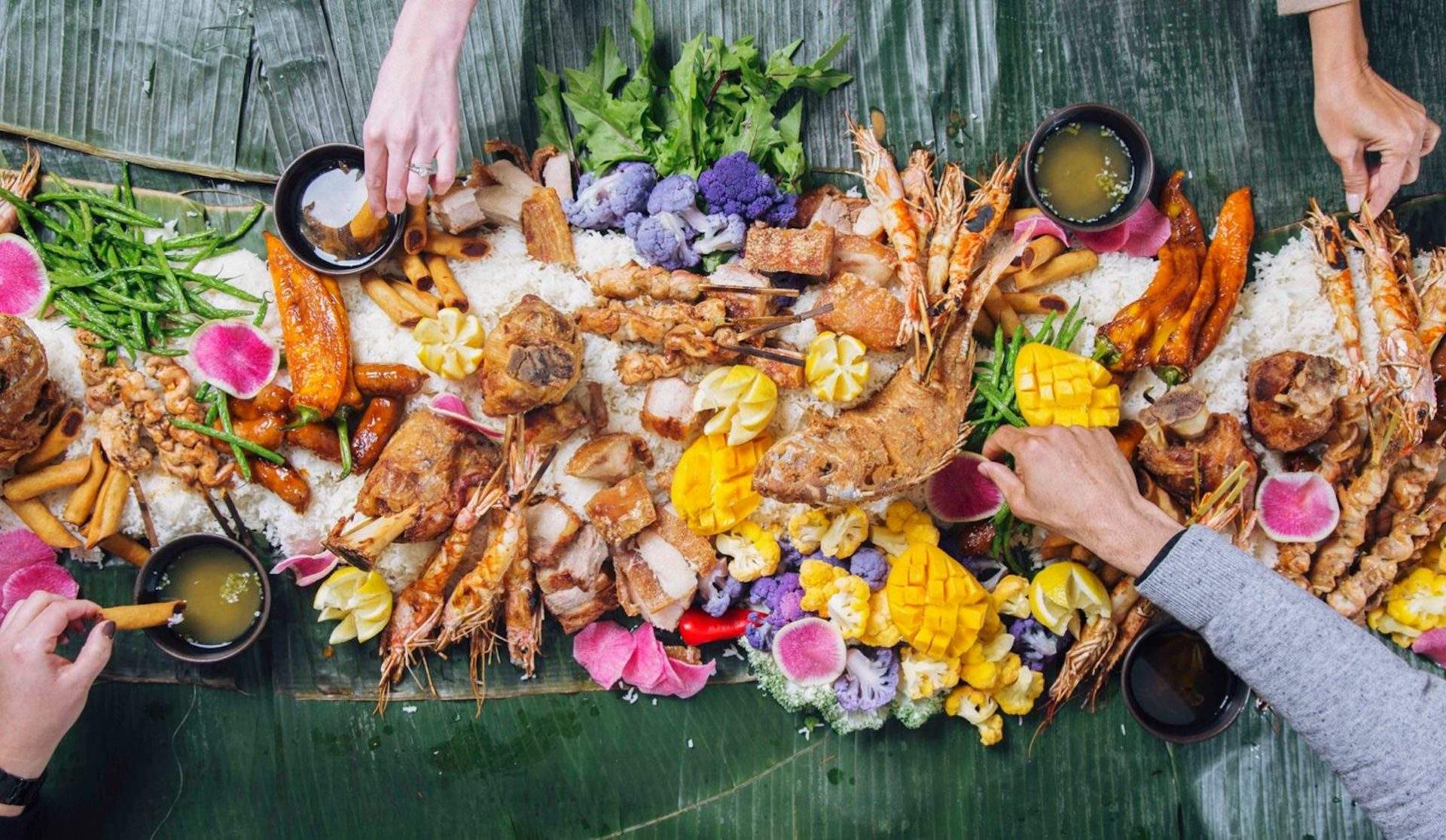
At River North’s Sunda, the cuisines and cultures of various Asian countries are celebrated. Japan, the Philippines, Indonesia, Thailand, Korea, and China are all represented on the menu with dishes that often get a modern twist.
The Kamayan feast hits closest to home for culinary director Mike Morales. “Kamayans have been a celebratory meal in my family and throughout the Philippines,” he says. “It’s a way to get everyone together to share a meal.”
Tagalog for “hands,” Kamayan refers to a communal-style Filipino feast that mixes a variety of dishes on a bed of banana leaves to eat without utensils.
“The practice was tolerated during the Spanish period, but it was suppressed during the American colonial period when American dining etiquette and the use of spoons and forks were aggressively promoted,” Morales says.
At Sunda, the family-style dish is presented on a massive board and as tradition has it is meant to be eaten by hand. Served atop a bed of jasmine rice, the feast serves up to 4 and includes adobo pork belly, crispy pata, chicken inasal (grilled chicken), garlic shrimp, lumpia eggrolls, and green beans along with dipping sauces. Brightly colored fruit and vegetables add to the visual appeal.
“Most people don’t know where to start,” Morales says, which isn’t the case for him. “The crispy pata, a confit of pork shank, is my go-to. I always go for the crispy bits of fat around the meat.”
As part of API Month, Sunda will offer four special dishes, including short rib rendang (Malaysia), mango sticky rice (Thailand), and scorpion roll (Japan).
Lisa Shames is a writer focused on travel and food culture in Chicago, IL, and is the U.S. contributor for Sogoodmag. Find her on Instagram.

